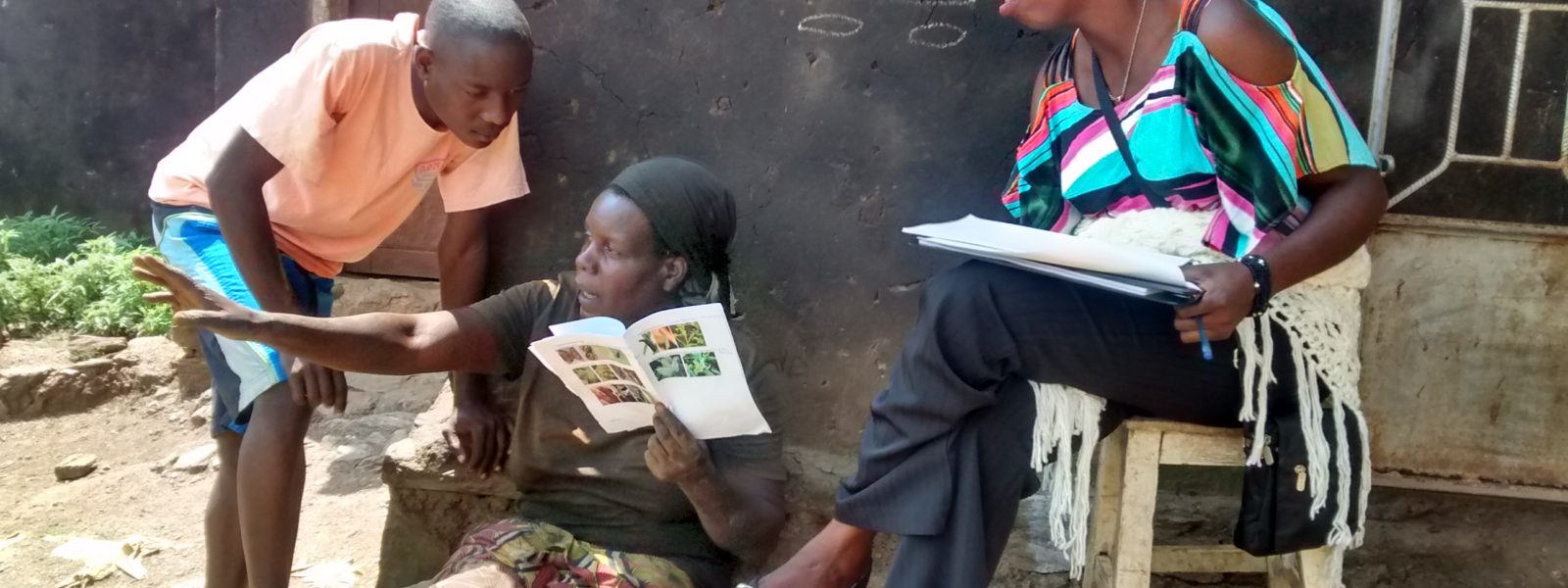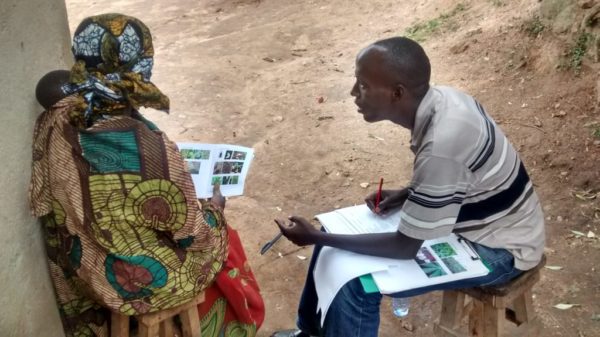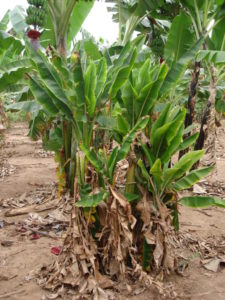Insect pests and diseases are high on the list of concerns for farmers of root, tuber, and banana (RTB) crops across much of sub-Saharan Africa. For every RTB crop grown, there are several pests and diseases that can reduce yield, lower the quality and profitability of the crop or even wipe out the entire harvest. In addition, farmers also face mounting crop losses due to a lack of clean planting material, soil infertility, infrequent rains, and drought. This not only contributes to food insecurity and reduced household incomes but also discourages investment.
In Rwanda and Burundi in particular, the popularity of RTB crops has been on the rise in recent years as rural households respond to acute food and nutrition needs caused by a mix of biotic and abiotic constraints affecting yields and production. Private sector investment in the processing industry has also spurred demand for RTB crops as a source ingredient for products like cassava flour and sweetpotato-derived confectionery and flour. But can crop yields keep up?
Little is known about the magnitude of yield and postharvest losses in East and Central Africa. “It is hard to quantify losses with high accuracy due to lack of official statistics,” explains Joshua Okonya, Research Associate Crop Protection, International Potato Center (CIP) and a coauthor of the paper published in 2019 in the International Journal of Environmental Research and Public Health. What’s more, a changing climate is enabling pests to migrate to previously pest-free areas. “Increasing temperatures, linked to climate change, is resulting in more favorable conditions for virus vectors at higher elevations,” says coauthor James Legg, Plant Virologist for the International Institute of Tropical Agriculture (IITA) and leader of RTB’s Flagship Project 3 on Resilient Crops.
Before integrated pest management (IPM) packages can be developed, researchers need to better understand the science of climate impacts and how farmers of RTB crops perceive the relative severity of different biotic constraints, says Legg.
To do just that, a team of researchers from CIP, IITA, Bioversity International, the Rwanda Agricultural Board, and the Institut des Sciences Agronomique du Burundi conducted a household survey in 2014 to better understand farmers’ concerns about pests and diseases affecting RTB crops. The team surveyed 810 farming households in 54 villages, 27 each in Rwanda and Burundi. All surveyed households reported farming as their main source of income. Most farmers grew at least two of the four main RTB crops for both home consumption and as a cash crop. The survey asked farmers to report on four key dimensions: (1) RTB crop production constraints, (2) pests and diseases threatening their crops, (3) estimated crop loss due to pests and diseases, and (4) whether their household experienced any form of food insecurity due to pests and diseases in the previous cropping season.
The survey captured detailed perceptual differences for each crop. Despite some similarities between the two countries, overall productivity was slightly higher in Rwanda, whereas the prevalence of pests and diseases and reports of food insecurity were higher in Burundi. Additionally, farmers listed poor quality planting material due to seed degeneration and the lack of certified seed commercially available as major constraints.
The study highlighted the significance of pests and diseases such as potato late blight, Xanthomonas wilt of banana, cassava whitefly, and sweetpotato butterfly, and their devastating effects on the livelihoods of many of the farmers. The survey also found that more farmers in Burundi than Rwanda had stopped growing some of the RTB crops due to damage by pests and diseases. Okonya observed that “in the low altitude areas of Kabezi in Burundi, the majority of farmers no longer grew banana because it was wiped out by Xanthomonas wilt of banana.”
The research team suggested that a package of interventions is needed to control the impacts of the reported pest and diseases, and thereby strengthen the food security of these farming communities. Such interventions would combine the supply of healthy planting material of varieties that are pest and disease resistant with appropriate cultural control measures. “Although affordable and effective control measures are already available for many of the most common diseases of RTB crops, more research still remains to be done in Rwanda and Burundi to develop and adapt comprehensive integrated pest and disease management packages that can tackle all of the major pests and diseases affecting these crops,” the study concluded.
“It is envisaged that the survey findings will be used by researchers in national agricultural research systems and national plant protection organizations, as well as by NGO and extension staff. Additionally, the results could also provide valuable insights for other countries in East and Central Africa with mid- to high-altitude production systems,” explains Guy Bloome, a coauthor of the study who works on integrated banana and seed systems at Bioversity International. Not only will the findings generated by the survey be important first steps to understanding farmers’ perceptions of pest and disease constraints, but the knowledge and insights gained will also be useful in guiding policy, development interventions, and research to design sustainable strategies for managing such threats to RTB crops productivity. “Once this happens,” says Legg, “the future for RTB farmers in the region should be bright.”


